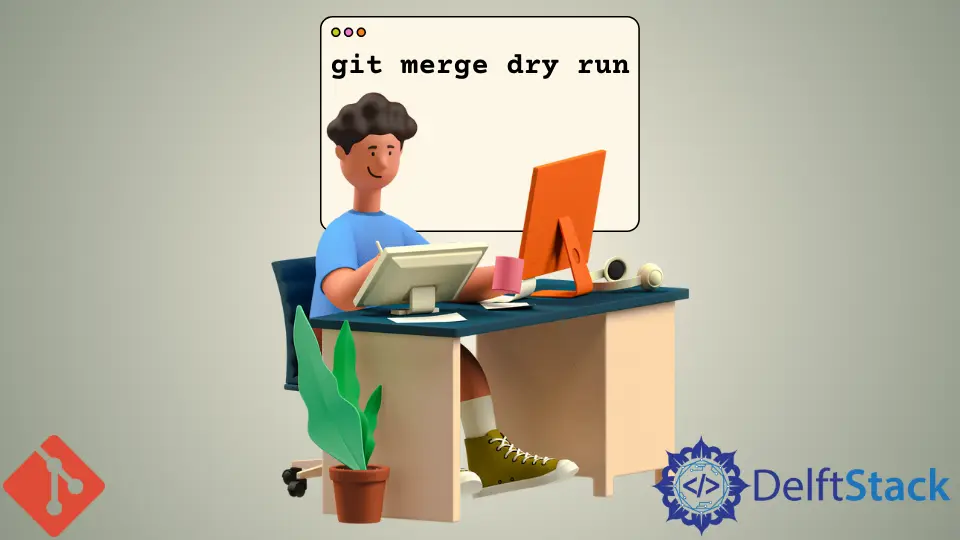Git Merge Dry Run
- Understanding Git Merge and Dry Run
- How to Perform a Git Merge Dry Run
- Checking for Merge Conflicts
- Best Practices for Using Git Merge Dry Run
- Conclusion
- FAQ

When working with Git, merging branches is a common task that can sometimes lead to unexpected conflicts or issues. To avoid these surprises, the Git dry run command is an invaluable tool.
This tutorial will walk you through the process of merging branches using Git’s dry run feature, allowing you to preview the changes that will occur without actually applying them. By the end of this guide, you’ll understand how to use the dry run command effectively and confidently merge your branches, ensuring a smoother workflow and reducing potential errors.
Understanding Git Merge and Dry Run
Before diving into the specifics of the Git merge dry run command, it’s essential to grasp the basic concepts of merging in Git. Merging is the process of integrating changes from one branch into another. This is often done when you want to incorporate new features or bug fixes from a development branch into your main branch.
The dry run feature, on the other hand, is a way to simulate the merge process without making any actual changes to your repository. This allows you to see what will happen if you proceed with the merge, including any potential conflicts. Using the dry run command can save you a lot of time and headaches, especially in complex projects.
How to Perform a Git Merge Dry Run
To perform a dry run of a Git merge, you can use the --no-commit option. This option allows you to see the changes that would occur during the merge without committing them immediately. Here’s how to do it:
- First, ensure you are on the branch you want to merge into. For example, if you want to merge changes into the
mainbranch, you would switch to it using the following command:
git checkout main
- Next, execute the merge command with the
--no-commitoption:
git merge --no-commit feature-branch
Output:
Auto-merging file.txt
CONFLICT (content): Merge conflict in file.txt
Automatic merge failed; fix conflicts and then commit the result.
This command attempts to merge changes from feature-branch into main without creating a commit. If there are any conflicts, Git will notify you, allowing you to address them before proceeding.
When you run this command, Git will provide feedback on the merge process. If there are conflicts, you’ll see messages indicating which files are affected. This gives you a chance to resolve these issues before finalizing the merge.
Checking for Merge Conflicts
Once you’ve performed the dry run, it’s crucial to check for any merge conflicts that may arise. Conflicts occur when changes in the two branches are incompatible. After running the dry run command, if you see conflict messages, you can take the following steps:
- Identify the files with conflicts. Git will list these files in the output of the previous command.
- Open each conflicting file in your text editor. You’ll see conflict markers indicating the conflicting sections.
- Manually resolve the conflicts by choosing which changes to keep or combining them as necessary.
After resolving the conflicts, you can proceed to complete the merge with:
git commit -m "Resolved merge conflicts and completed merge"
Output:
[main 1234567] Resolved merge conflicts and completed merge
This finalizes the merge and commits the changes to your branch. Remember, always review your changes before committing to ensure everything is as intended.
Best Practices for Using Git Merge Dry Run
Using the Git merge dry run command is a best practice for developers aiming to maintain a clean and organized repository. Here are some tips to keep in mind:
- Regularly use dry runs: Incorporate dry runs into your workflow, especially before significant merges. This will help you catch potential issues early.
- Communicate with your team: If you’re working in a collaborative environment, ensure your team is aware of the changes being merged. This can prevent conflicts and streamline the process.
- Keep branches updated: Regularly pull the latest changes from the main branch into your feature branches. This reduces the likelihood of conflicts when merging.
- Document your merges: Maintain a log of your merge activities, especially if conflicts were resolved. This can be helpful for future reference.
By following these best practices, you’ll enhance your Git workflow and minimize the risks associated with merging branches.
Conclusion
Mastering the Git merge dry run command is an essential skill for any developer working with Git. By understanding how to simulate merges and identify potential conflicts, you can ensure a smoother integration process and maintain a clean project history. Whether you’re working solo or as part of a team, using the dry run feature will empower you to make informed decisions and streamline your development workflow. Embrace this powerful tool, and watch your Git experience improve.
FAQ
-
What is a Git merge dry run?
A Git merge dry run is a simulation of the merge process that allows you to preview changes without actually applying them. -
Why should I use the dry run command before merging?
Using the dry run command helps identify potential conflicts and issues before they affect your codebase, saving time and effort. -
Can I still resolve conflicts after a dry run?
Yes, after performing a dry run, you can resolve any conflicts that arise before finalizing the merge.
-
Is the dry run command available in all Git versions?
Yes, the dry run command with the--no-commitoption is available in all modern versions of Git. -
How often should I perform a dry run before merging?
It’s a good practice to perform a dry run before any significant merge, especially when working with multiple branches or in a team environment.
Abdul is a software engineer with an architect background and a passion for full-stack web development with eight years of professional experience in analysis, design, development, implementation, performance tuning, and implementation of business applications.
LinkedIn